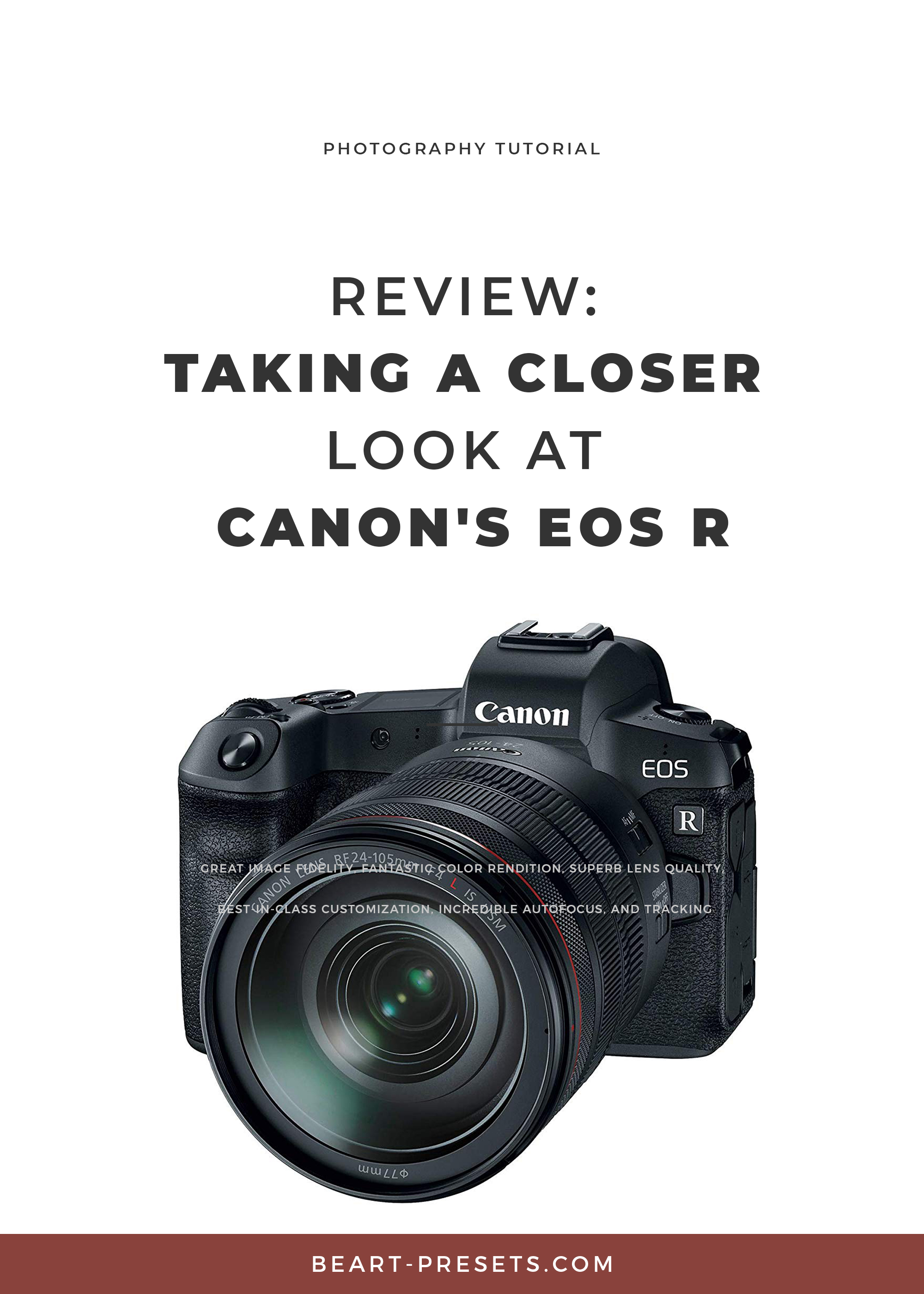Review: Taking a closer look at Canon's EOS R
Digital Camera World recently reviewed the EOS-R, a full-frame mirrorless system recently introduced by Canon. It's Canon's long-awaited competitor to Sony's Alpha series. We thought we'd take a closer look at what DCW had to say in their review because we, like many others, have been curious to see what Canon would come up with to compete with Sony's very popular Alpha series.
Canon furthered upped their game by also introducing two bespoke lenses for the EOS R: the RF 50mm f/1.2L USM and the RF 24-105mm f/4L IS USM. They've also reviewed both lenses, but we'll be only looking at their camera review in today's post. You can read their entire comprehensive reviews of both camera and lenses at:
Here are the specs for the Canon EOS R
Sensor: 30.3MP full-frame CMOS, 36 x 24mm
Image processor: Digic 8
AF points: 5,655 Dual Pixel AF positions
ISO range: 100 to 40,000 (exp. 50 to 102,400)
Max image size: 6,720 x 4,480
Metering modes: Evaluative, partial, spot, center-weighted
Video: 4K UHD at 29.97p, 25p, 24p, 23.98p
Viewfinder: EVF, 3.69m dots, 100% coverage
Memory card: SD / SDHC / SDXC
LCD: 3.15-inch fully articulating touchscreen, 2.1m dots
Max burst: 8fps
Connectivity: Wi-Fi, Bluetooth, NFC
Size: 135.8 x 98.3 x 84.4mm (body only)
Weight: 580g (body only; 660g with battery and card)
Key features
The EOS R comes with a full-frame 30.3MP CMOS sensor, putting it on par with the EOS 5D Mark IV DSLR. DCW writes that the key difference between the two sensors is that the "EOS R features a phase-difference detection system with the 1D X Mark II’s Dual Pixel CMOS AF – and a staggering 5,655 focus positions, which cover 88% of the frame horizontally and 100% vertically."
Two things to keep in mind which will hopefully be addressed soon with firmware:
Eye tracking is only possible in single AF.
The autofocus offers shared Dual Pixel CMOS AF, but users are complaining of issues with video and certain lenses.
Other Annoying Issues
EOS R doesn’t feature any in-body image stabilization (IBIS) unlike Sony, Nikon, Panasonic, and Olympus which all have some version of it. So, this is a problem with the Canon EOS R. DCW writes that Canon's response to this issue is that the dedicated in-lens are offering the optimum stabilization. The downside to that, of course, is that not every lens can benefit from it without having IBIS.
Video Pros
The EOS R comes with C-Log as standard and can record internally at 4:2:0 8-bit with Rec. 709 color space, and externally at 4:2:2 10-bit with Rec. 2020.
Video Cons
It can only shoot 4K (UHD) up to 30fps and 1080p (FullHD) up to 60fps. To shoot at 120fps, you have to go down to 720p (HD). Unbelievably, reports DCW, the 4K comes with the same 1.7x crop that afflicts the 5D Mark IV.
Lens Mount
Cons aside, Canon has introduced a new lens mount with its full-frame mirrorless system. The new RF mount offers the same 54mm diameter as the existing EF mount, while its 20mm back focus distance is less than half the 44mm of its older sibling.
There's also a new 12 pin connection an improvement over the EF’s eight pins. This means better information and power transmission between the camera body and the lens. And, as DCW points out, this works in tandem with the Digic 8 process for better performance on some of the older EF and EF-S lenses you can use on the new EOS R. Overall, Canon allows for a photographer to use some of the older lenses with the new EOS R which is a significant plus!
ISO & Low Light Performance
Here's an area where Canon is better than Sony and Nikon. The EOS R ISO range is 100 to 40,000 (expandable to 50 to 102,400) - an advantage over its competitors. A huge plus for whom like to shoot at night is that it can autofocus down to -6EV!
Exterior Body
The magnesium alloy body on the EOS R means it's got a slimmer profile than other DSLRs on the market. Most photographers can appreciate lugging around something with a smaller physical profile which is still compatible with some larger lenses.
To manipulate the ISO use the M-Fn Bar to touch, tap, or swipe, according to DCW. This means you can control the exposure triangle without taking your eye away from the EVF. The M-Fn Bar doesn't replace the joystick.
As for the EVF, DCW reports that it's exceptionally "large, fast, responsive and clear." You don't miss out on a flip screen either because this is the only full-frame mirrorless camera on the market today which has one.
Performance
The image quality is what you would expect with a 30.3MP sensor, Digic 8 processor, and RF lenses. In their lab tests, DCW found it outperformed the Canon 5D Mark IV, Sony A7R III, and Nikon Z7 for ISO noise performance. However, as you'd expect, it didn't fare as well with resolution unable to compete with the Z7’s 45.7MP and the A7R III’s 42.4MP sensors.
On the dynamic range, DCW reported that it performed better than Sony up to ISO400. Beyond that, it couldn’t quite keep up with some of its rivals.
Conclusion
Digital Camera World concluded that the EOS R gets the following things right: "great image fidelity, fantastic color rendition, superb lens quality, best-in-class customization, incredible autofocus, and tracking." However, not including image stabilization and the fact that 4K video is severely cropped, plays against the EOS R. DCW recommends the EOS R for existing Canon users wanting to "expand their system or keep their collection of lenses."



















